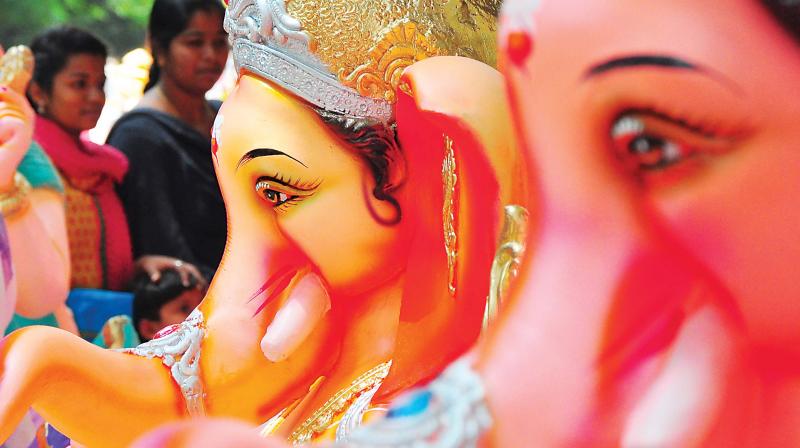Greener Ganeshas to help aquatic life

Well, it's that time of the year again - when we traditionally welcome the Elephant-headed God (Lord "Ganesha") in to our homes on Ganesha Chaturthi and later followed by the customary - 'Visarjan', where we send off Lord Ganesha by immersing his idols. The festival is celebrated with great fervour across many parts of the country, where the community gathers to cheer the Lord through song, music, offerings and other festivities. The processions of Ganesha idols, making his way to the immersion venue are colourful affairs with lots of singing, music, dancing, where the atmosphere is completely charged with chanting by the followers. And, so is the case with countless idols that make their way through various streets in corners of the country, and finally into different lakes, ponds and water bodies.
Though the 'Visarjan' (immersion) symbolizes that nothing is permanent in this world, it definitely leaves behind a negative and lasting impact on these water bodies where the idols were immersed. With every passing season the adverse environmental impact of idol immersion on lakes and water bodies and its surrounding environment and ecology are deteriorating at an alarming rate. And some of the damages to our environment cannot be reversed or repaired. And this year has been no different either.
Ganesha idols are generally and mostly made up of Plaster of Paris (POP), plastic and cement. These idols are then decorated with paints that are highly toxic, heavily decorated and with lots of flowers. Therefore, to be precise, once the idols are immersed or once the Visarjan takes place, these idols, along with other toxic material, continue to exist in the water for decades. In addition, these toxic materials also travel from one water body to another, through a wide network of natural underground water drainage system, thereby leaving a far reaching and highly negative impact on the ecological system. Plaster of Paris (POP) - contains calcium sulfate hemihydrate, which can take several years to completely dissolve itself. In addition to this it also reduces oxygen levels in the water and kills the fishes and other aquatic plants and animals.
This eventually gives rise to huge amount of water contamination and large scale pollution which then gets mixed with other types of wastes, thereby poisoning our water sources for several years. The Ganesha idols are mostly decorated with toxic paints, which contain heavy metals such as lead and mercury that seep into the water after the idol has been immersed. This increases the acidic level of the water which is extremely bad for the environment and especially for the aquatic life. High levels of acidity in water can also cause various skin diseases in human beings.
Additionally, these idols are decked up with overwhelming metal jewellery, decorations and huge amounts of flowers which eventually remain in the water bodies after the idols are immersed. Items like cosmetics, ornaments, clothes, plastic, etc. increase the amount of trace elements such as chromium, mercury, zinc, lead, iron and arsenic as well as organic matter, metalloids, inorganic matter, grease, oil and more. All these negatively affect the aquatic ecosystem and the overall ecology and environment.

